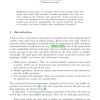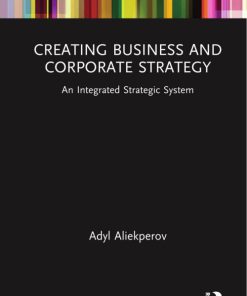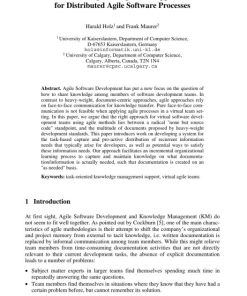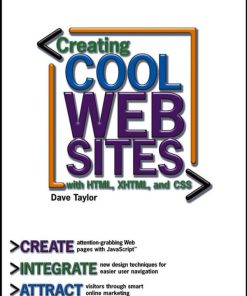Creating Agile Business Systems with Reusable Knowledge 1st Edition by Amit Mitra, Amar Gupta 0521851637 9780521851633
$50.00 Original price was: $50.00.$25.00Current price is: $25.00.
Authors:A. Mitra, A. Gupta , Tags:# Hardcover: 404 pages # Publisher: Cambridge University Press (February 5; 2007) # Language: English # ISBN-10: 0521851637 # ISBN-13: 978-0521851633 , Author sort:A. Mitra, A. Gupta , Languages:Languages:eng , Published:Published:Dec 2007
Creating Agile Business Systems with Reusable Knowledge 1st Edition by Amit Mitra, Amar Gupta – Ebook PDF Instant Download/Delivery. 0521851637, 9780521851633
Full download Creating Agile Business Systems with Reusable Knowledge 1st Edition after payment
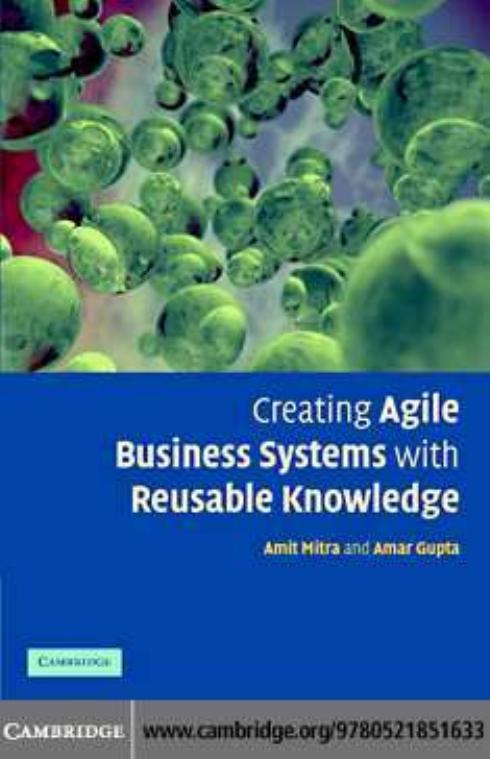
Product details:
ISBN 10: 0521851637
ISBN 13: 9780521851633
Author: Amit Mitra, Amar Gupta
Agility and innovation are necessary to achieve global excellence and customer value in twenty-first century business; yet most approaches to business process engineering sacrifice these in favor of operational efficiency and economics. Moreover, the IT systems used to automate and encapsulate business processes are unresponsive to the dynamic business environment. Mitra and Gupta provide insight to close this gap – showing how innovation can be systematized with normalized patterns of information, how business processes and information systems may be tightly aligned, and how these processes and systems can be designed to automatically adapt to change by reconfiguring shared patterns of knowledge. A modular approach to building business systems that parallels that of object oriented software is presented. Practical templates required for accelerating integration, analysis and design are provided. This book will appeal to consultants, analysts, and managers in IT as well as researchers and graduate students in business, management and IT.
Creating Agile Business Systems with Reusable Knowledge 1st Table of contents:
1 What is this book about and who should read it?
2 What will the information be used for?
3 Technology?s broken promise
4 Component reuse ? the genesis
5 Scope of this book
6 Foundation of knowledge reuse: three pillars
6.1 The first pillar: metamodel of business knowledge
6.2 The second pillar: business patterns
6.3 The third pillar: people and best practices ? managing change effectively
7 How this book is organized
1 On the nature of reality and the nature of business
Introduction to the MetaWorld
1 The nature of knowledge
2 Modeling the real world
3 Metaworld of information
Objects, relationships, processes, and events
Perception and information naturally speaking: domains, units of measure, and formats
A parable of Jim, Jane, Jugs of milk, and Robert in the United States of Information
Nominal domains
Ordinal domains
Difference scaled domains
Ratio scaled domains
Mr. Domain?s secret
The structure of domains ? perception, .ve senses, and aliens in the lost worlds of metanesia
4 Basic metaobject inventory
5 Metaobjects and the natural repository of knowledge
6 The architecture of knowledge and the scope of the metamodel in this book
The black box approach
The node?branch approach
The architecture of knowledge
2 The object at the root of it all
1 Object class versus object instance
2 The state of an object
State charts
Events, effects, and actions
Data and attributes: states of behavior
Must every object have attributes?
Three values every attribute and relationship may have
Don?t know the value
Null values
Default values
The overall state of a system
What is an object ? really?
State space
Knowledge in state space
Moving through state space
Spontaneous state change
Lost in space: the curse of change
3 Inheriting behavior ? subtypes, supertypes, and partitioning of objects
Supertypes and subtypes
Object partitions and role modeling
Properties of partitions
Atomic rules that span more than one partition
The meaning and syntax of behavior-based partitions
Default states, subtypes, and variation inheritance
Subtyping criteria ? dividing to conquer
4 The problem of perspective
What is perspective?
Does a universal perspective exist?
The tyranny of words
5 Repositories of meaning
The metamodel of object
Windows into objects
The universal metaobject
3 The nature of attributes
1 The structure of attributes and states
Instance identi.er
Participation in relationships
Attribute value
The metamodel of attribute and the metamodel of state
2 Attribute constraints
Constraints on nominal attributes
Inclusion sets
Exclusion sets
Constraints on ordinal attributes
Constraints on quantitative attributes
Combining inclusion and exclusion sets
Merging open ranges
Clashing constraints
Mixing completely certain constraints
Mixing incomplete or uncertain constraints
The merger of meaning and the metamodel of value constraint
Derived attributes and relationships between attributes
Joint constraints
Magnitude constraints
Rule expressions
Statics versus dynamics of derived attributes
1 Process rules
2 Relationship rules
Implicit and intermediate rules
Enumeration
Implied relationships and rule normalization
Polymorphism
Recursion
Incomplete rules
Rules about rules
The order of a constraint
Stationarity of constraints
Constraining state space
The integrated metamodel of value constraint
3 Naming and expressing attributes
Naming a meaning
Meaning versus expression
Quantitative attributes
Qualitative attributes
4 Domains and their expression
1 The meaning and architecture of format
Five fundamental formats
Patterns of symbols ? the architecture of pattern
What is a pattern?
Patterns in physical space and time
(A) Patterns of sequenced versus unsequenced association
(B) Patterns of separation: distance and distinction
(C) Patterns of inclusion versus patterns of exclusion
(D) Patterns of shapes: dimensions of freedom
(E) Boundaries of patterns
Partitions and subtypes
Measures of similarity
Proximity metric
Location in state space versus physical location
Patterns in state space
Nominally scaled state space
Ordinally scaled state space
Difference scaled state space
Ratio scaled state space
Mixed space
The order of a pattern
The metamodel of pattern
The essence of a pattern
Kinds of patterns
Patterns of constraint
Region versus range
Location versus constraint
Shaping and in.uencing patterns
Object counts and statistical patterns
Arrays
Patterns in physical space and time
Null space ? patterns of everything, patterns of nothing
Patterns of symbols and patterns of objects
The integrated metamodel of pattern
Pattern recognition and the metamodel of knowledge
Standards, language and patterns of patterns
Format, language, and semiotics
Format and format conversion ? scope, size, and precision
Precision
Scope, size, and truncation
Dimensionality
The polymorphic nature of format
2 The meaning of units of measure
Number versus value
The nature of numbers
The pattern in number
Round numbers versus truncated numbers
Measures of meaning
Formats of units of measure
The metamodel of units of measure
Conversion between units of measure
The metamodel of measure conversion rules
Subtyping measure conversion rules
Conflicting subtypes ? when objects are not enough
3 Domains of meaning and the metamodel of object
The polymorphic behavior of domains
Domains of information
The information in ?value?
Operations on values
The information in domain
Creating new domains from old
Ratio scaled domains
Metrics and the domain of quotients
Domains of growth
Domains of proportions
Difference scaled domains
Ordinally scaled domains
Nominally scaled domains
Domains by association
Enumeration
Accuracy
Reliability (risk)
Completeness (exhaustivity)
Validity
Complex domains and mixed meanings
The risk and bene.t of domain analysis
Reusing knowledge ? building upon the old
The most frequently used domains
Frequently used primary domains
Frequently used secondary domains
The risk of domain analysis
Shortcuts
Domains and value sets ? states of domain
The metamodel of domain
Measurement of meaning ? a paradox of perspectives
Domains in perspective
Domains of viewpoints
Embracing scope creep
Meanings that represent meanings
4 Storing abstract meaning
People also search for Creating Agile Business Systems with Reusable Knowledge 1st;
creating agile user stories
creating agile stories
reusable knowledge creation
creating a business plan knowledge matters



